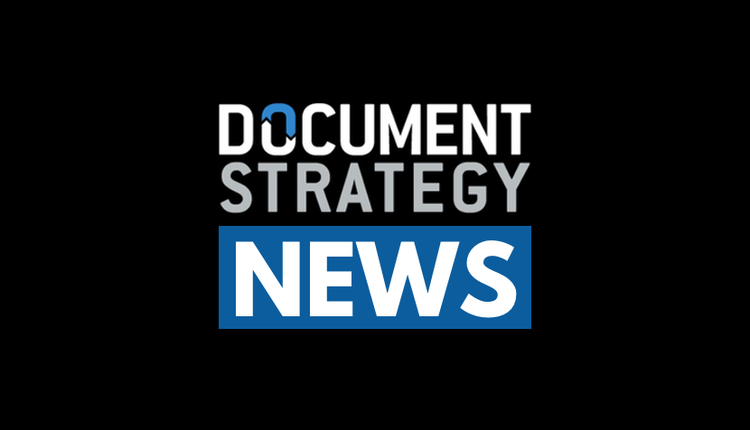
While smartphones still dominate worldwide device sales and many business users rely on their phones for making calls and checking email, the smaller screen size of a smartphone limits their ability to serve as a primary enterprise computing device. Tablets, on the other hand, offer the best of both worlds: they combine the mobility of a smartphone with much of the functionality of a traditional desktop computer.
While seemingly ideal for businesses, tablets don’t open up possibilities for enterprise mobile computing on their own. In order to truly benefit enterprise users, it’s critical that tablets are outfitted with advanced document management capabilities. Creating, reviewing, editing and managing documents of a variety of formats is a critical element of everyday business activity. Today’s content management systems (CMS) do not typically provide this capability on their own, which is why HTML5 document viewers with back-end support are an essential component of enterprise tablet adoption.
How do HTML5 viewers compare with traditional applications?
One of the major benefits of tablet use in the enterprise is the simplicity of the device and the ease of use of the operating software, minimizing support for the corporate IT staff. Alternative methods based on computer applications or tablet apps generally require installation, configuration, updating and training. A more efficient option for enterprises to ensure software compatibility on their users’ tablets is by employing pure HTML technology that guarantees functionality in any common computing environment with less support and training.
Unlike traditional mobile or desktop applications, a HTML5 viewer requires no installation or frequent updates. This is key in today’s business landscape, where employees are bringing their own mobile devices to work and need simple and easy-to-use software to access critical documents and images.
Without a pure HTML5 viewer, enterprise workers need multiple applications installed on their device (Adobe Acrobat, Microsoft Word, etc.) to ensure that they can view all of the documents and images that come their way on any given day. These applications often require downloads and frequent updates—both of which are a burden for IT departments. Additionally, it may be necessary to switch out of the document management application to a viewer and back, increasing the likelihood of confusion and mistakes. The logistics involved with providing a far-flung network of users with the most up-to-date software can be an overwhelming task.
HTML5 viewers on tablets
A powerful HTML5 document viewer with the appropriate server-side technology can support viewing of many document and image types (AFP, Word, Adobe PDF, PNG, PCL, TIFF, etc.), as well as standard and sophisticated handling capabilities such as zooming, rotation, multiple page handling, thumbnails, annotating and redacting. These features benefit a number of different industries:
- For medical professionals, this means being able to pull up patient records—regardless of format—on a tablet while they are directly next to the patient without having to worry about having programs like Microsoft Word or Adobe Acrobat downloaded to their device.
- For insurance agencies, this means being able to pull up a JPEG or PNG map of an accident on location, make edits and send to other collaborators all from the tablet platform.
- For shipping professionals, this means being able to pull up a PDF document on a tablet and easily scan a barcode for immediate reporting back to central headquarters, as well as notifications to the shipper and customer.
Along with the versatility to view any type of document or image, a document viewer also provides all business users with the ability to create virtual documents—a specific selection of pages from a case file consisting of several different documents with thousands of pages. After selecting the pages needed within a massive case file, the user can quickly scroll through the virtual document containing only the requested pages. Another major time saver for business workers is automated cursor placement, which pre-defines specific page locations so content can be copied or marked without the viewer having to manually move the cursor.
The best HTML5 document viewers have been optimized specifically for tablets so users can intuitively interact with documents using touch-based commands. With just a finger, users can easily add and edit annotations with pre-configured stamps like “approved,” “rejected” and “for further review.” Other annotations known as dynamic stamps allow users to place data, time, author and other pertinent info with one easy click.
Momentum-based scrolling also makes it easy for a user to navigate through thumbnails of a document with thousands of pages. All in all, a web-based document viewer optimized for smartphones and tablets makes the tasks of a business or healthcare professional much easier by speeding data entry and eliminating typing.
How back end server support enhances tablet operations
While a HTML5 viewer can be simply accessed through a web browser, a viewer’s back-end server can greatly enhance tablet viewers. A sophisticated back-end server has the ability to convert and manipulate documents quickly on the server before only sending what is useful to the client’s tablet. Conversely, a less sophisticated server—or a “dumb server” —would just send the original documents to the tablet. Specifically, a dumb server might send a PNG or a PDF file down to the tablet but would not be able to convert a TIFF or Word document to a tablet compatible format because there would be no conversion software on the server. The same thing would occur with annotation and redaction functionality, which requires server-side software to perform some of the processing. Page on demand and thumbnail conversion also require server-side processing.
Can tablets do it all?
In today’s mobile landscape, tablets are an increasingly attractive option for business users looking for a more portable primary computing device. They are not going to replace smartphones or conventional PCs altogether, but they do combine many essential features from both of these devices into one versatile and efficient business tool. The portability benefits for workers in a variety of industries combined with cost savings for their respective IT departments cannot be ignored and are reflected in recent tablet sales.
However, tablets can’t fully shoulder the load required of a business computing device on their own. To ensure a tablet is prepared to handle the document management capabilities needed across the enterprise, a document viewer should be employed. Pure HTML5 document viewers guarantee that these users can be as productive and responsive on a tablet as they would be on a conventional desktop computer for a fraction of the cost. Together, document viewers and tablets can unlock a wealth of business benefits.
SIMON WIECZNER is president and CEO of Snowbound Software. His background includes over 25 years of software industry experience. His management and marketing experience spans a number of companies including First Data, Computervision, ADP, BSO/Tasking, Numonics, Ergo Computing and AccuSoft as well as his own ventures. He holds a BS in Management and an MBA in Marketing from MIT.
Can tablets do it all?
In today’s mobile landscape, tablets are an increasingly attractive option for business users looking for a more portable primary computing device. They are not going to replace smartphones or conventional PCs altogether, but they do combine many essential features from both of these devices into one versatile and efficient business tool. The portability benefits for workers in a variety of industries combined with cost savings for their respective IT departments cannot be ignored and are reflected in recent tablet sales.
However, tablets can’t fully shoulder the load required of a business computing device on their own. To ensure a tablet is prepared to handle the document management capabilities needed across the enterprise, a document viewer should be employed. Pure HTML5 document viewers guarantee that these users can be as productive and responsive on a tablet as they would be on a conventional desktop computer for a fraction of the cost. Together, document viewers and tablets can unlock a wealth of business benefits.
SIMON WIECZNER is president and CEO of Snowbound Software. His background includes over 25 years of software industry experience. His management and marketing experience spans a number of companies including First Data, Computervision, ADP, BSO/Tasking, Numonics, Ergo Computing and AccuSoft as well as his own ventures. He holds a BS in Management and an MBA in Marketing from MIT.

















